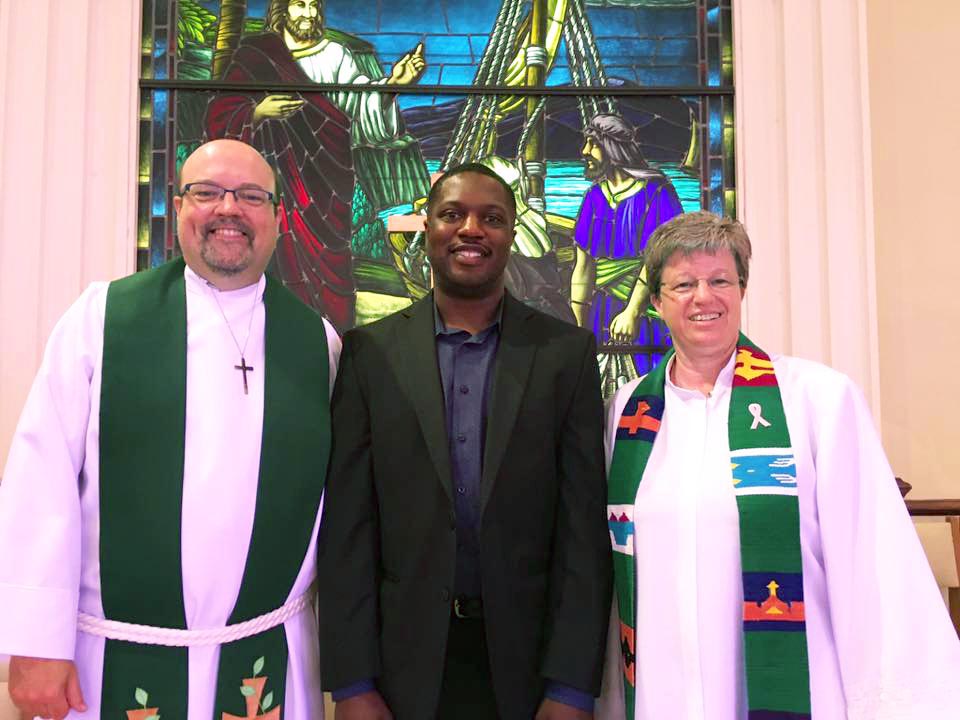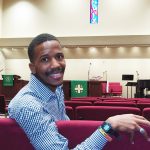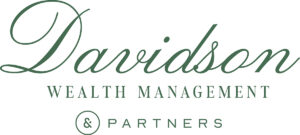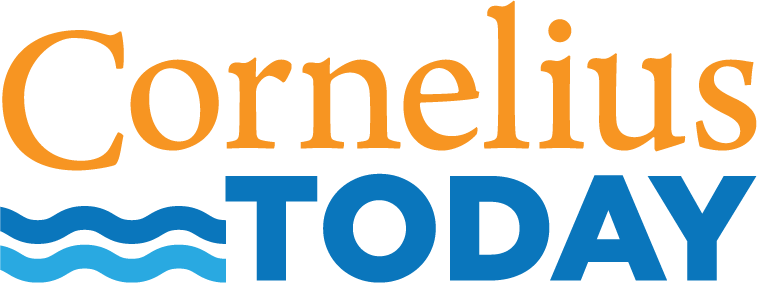Can churches reflect a more diverse community?

Jonathan Marlowe, Howard Harris and Angela Marlowe at Mt. Zion United Methodist Church
By Dave Yochum. A year after racial violence in Charlottesville, Va., and the defacing of the Confederate Soldier’s Monument in Cornelius, Mt. Zion United Methodist Church has a new youth pastor, an African-American.
“I want to reach all people, that’s what the Great Commission is,” says Howard Harris, the new Mt. Zion youth minister.
Diversity has always been interesting for Harris. He went to a mostly white Jesuit high school in Ohio, one of the best high schools in the state.
He grew up in a home where there was a picture of the Rev. Dr. Martin Luther King hanging up in their foyer. “I though everyone had a picture of Martin Luther King in their foyer,” he says.
King famously declared Sunday at 11 a.m. the “most segregated hour” in Christian America.
Harris and other members of the clergy in Cornelius are doing something about it, although there’s a long way to go before any congregation is truly multi-racial.
Rice University sociologist Michael Emerson defines a multiracial congregations as those where no one racial group comprises more than 80 percent of the congregation.
Less than 10 percent of all Christian congregations in the U.S. are racially mixed to a significant degree: 2-3 percent of mainline Protestant congregations, 8 percent of other Protestant congregations, and 20 percent of Catholic parishes.
It’s a fascinating aspect of American church history in light of Christian teachings.

Deandre Dukes at Community in Christ Lutheran Church
Deandre Dukes is the youth minister at Community in Christ Lutheran Church on the western edge of Cornelius on Sam Furr.
He grew up in a very strict, predominately African American Pentecostal church. “Most often if there was a Caucasian member, he or she had married an African-American,” Duke says.
A graduate of Toccoa Falls College with a BA in Christian Counseling & Psychology, Dukes is in his second year at Duke Divinity School.
As far as the spiritual formation team of Community in Christ, “to my knowledge I am the first African-American,” he says. He has been at CIC since January of 2017.
African-Americans comprise less than 1 percent of CIC members—Asians about the same, he says—while “not as diverse as we would like, we are making strides in the right direction.”
Church leaders are intentionally examining “what makes it difficult for us as a congregation to see the diversity that makes up our surrounding community, reflected within the community of Community in Christ. …
“And believe me, it’s not as simple as, ‘it’s the white church and African-Americans aren’t welcome.’ Like any other market, culture plays an extravagant part in who we attract and the Lutheran Church as a whole, and I would argue most of your American mainline churches, have a long way to go to achieve that hospitality,” says Dukes.
Churches embrace their traditions, many of them mystifying to strangers. That may encourage monolithic church populations in spite of all the outreach in the world.
“To me, diversity in the church is important because it reflects the beauty of all of God’s good creation,” says the Rev. Jonathan Marlowe, co-senior pastor at Mt. Zion. “God could have made us all alike, but God didn’t.”
Before coming to Mt. Zion, Marlowe served two churches in Reidsville, near Greensboro. One was predominantly white, and the other was predominantly African-American.
The two churches would worship together several times each year.
“Those were always the best Sunday mornings, because we reflected most fully the Kingdom of God. The predominantly white church got to where they really enjoyed the gospel choir from the black church tradition, and the African-American church really enjoyed the up-beat music from the praise band from the white church,” Marlowe says.
Dukes, along with youth pastors from Huntersville First Baptist, Huntersville First United Methodist Church, Huntersville First Presbyterian Church and Radiant Life bring youth together once a month, rotating church locations, play games, eat and have devotion—diversity at a grassroots level.
“We are doing life together,” Dukes said.
Our Partners









